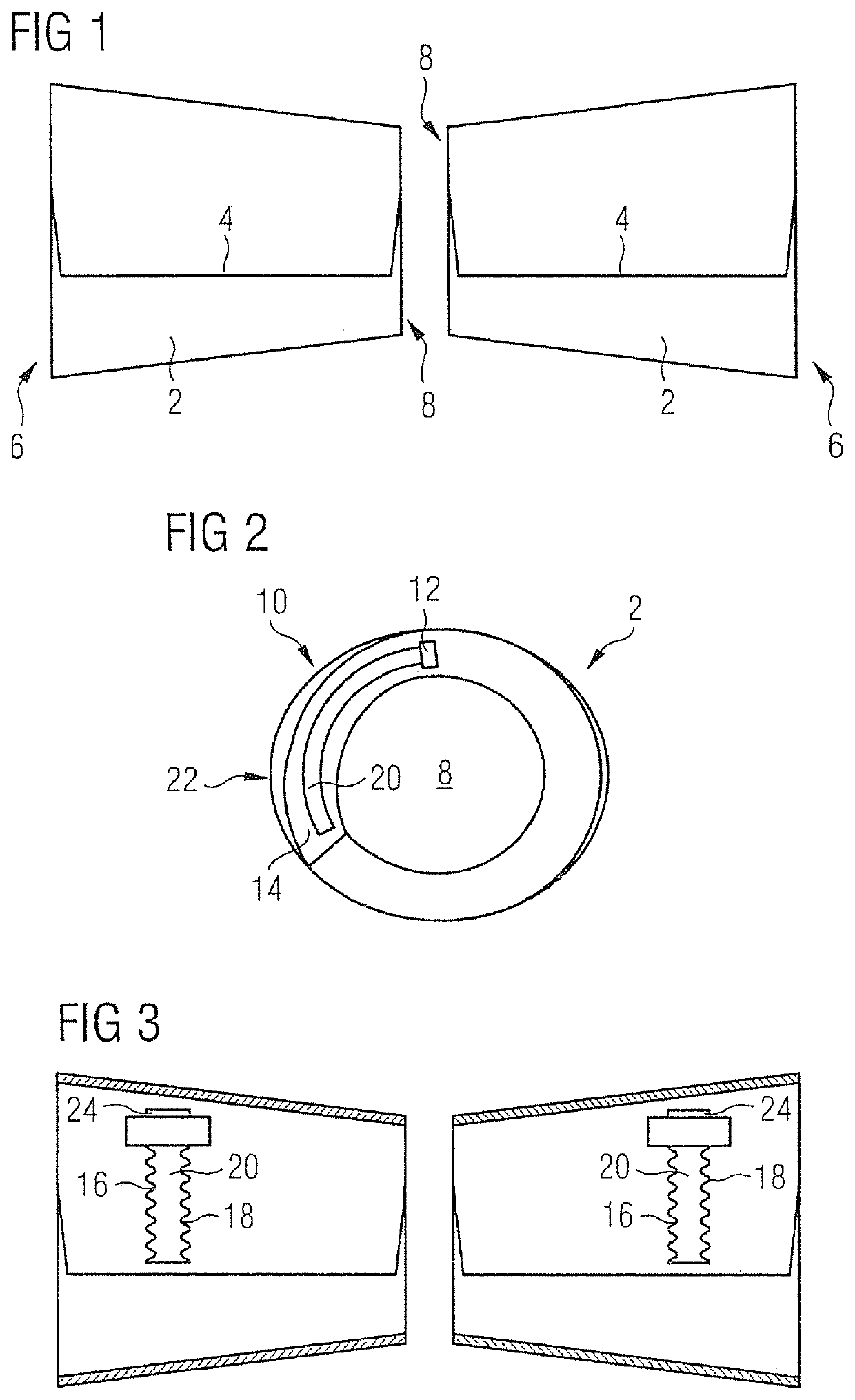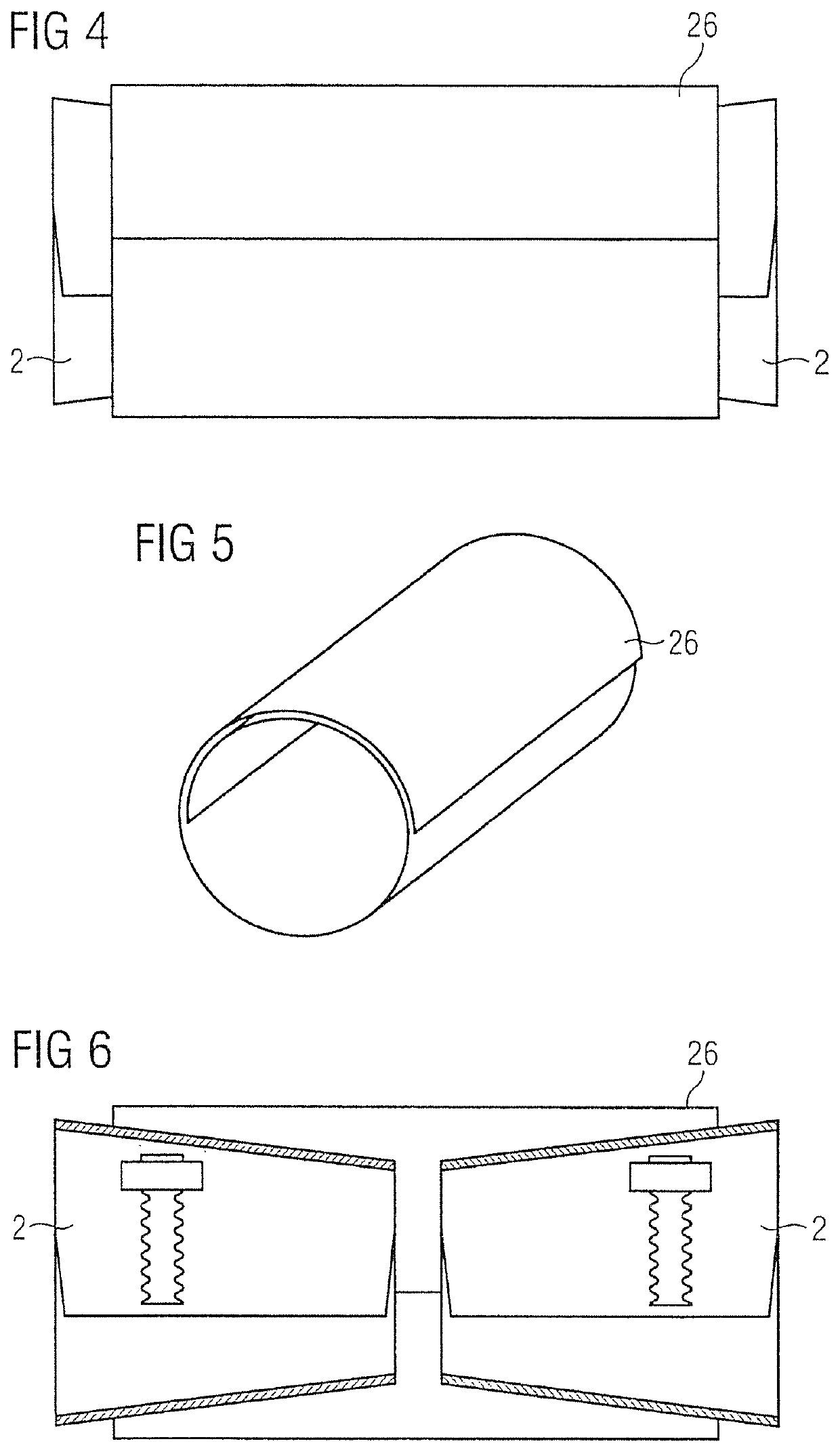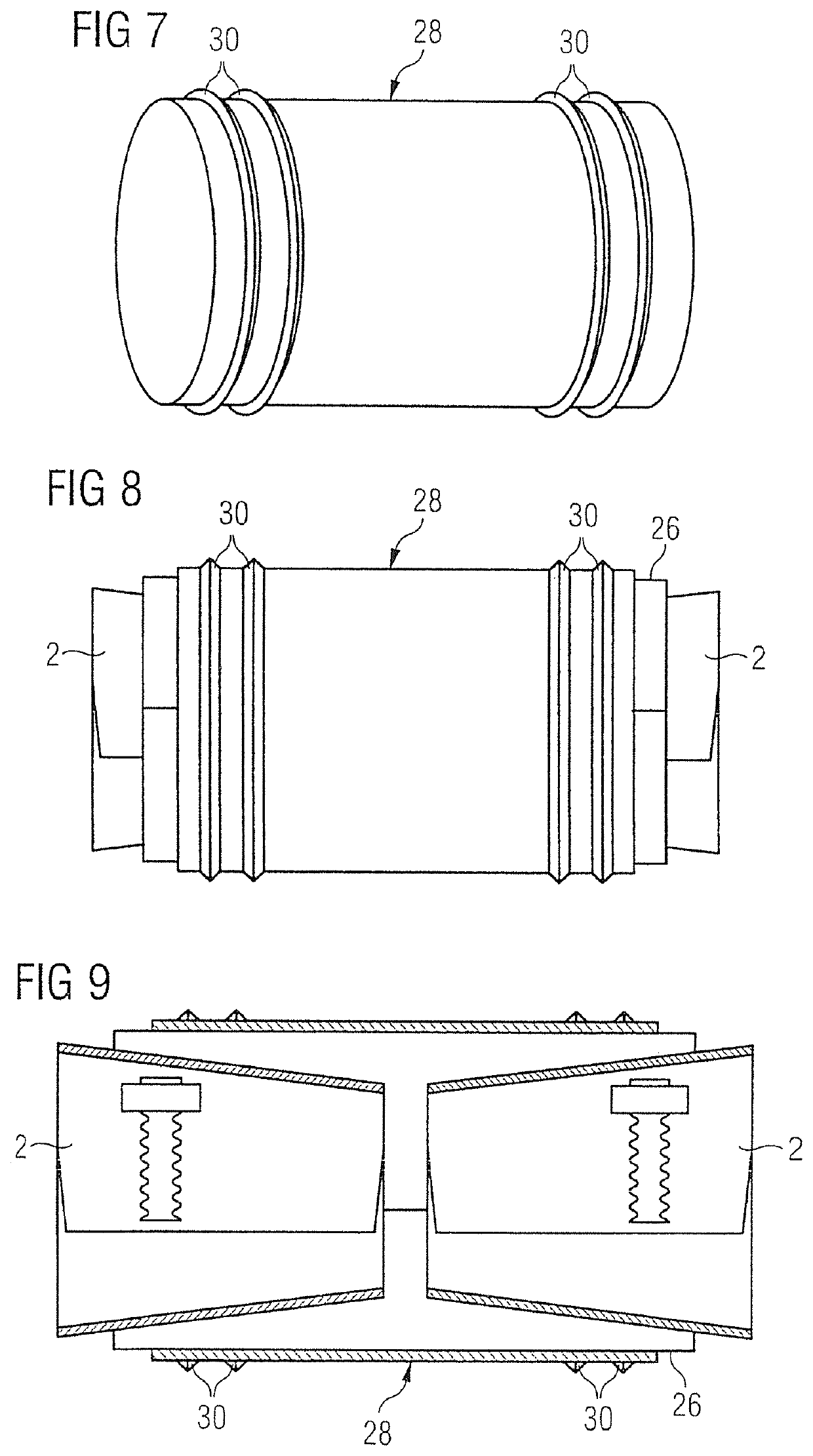Sealing sleeve for pipe offsets
a sealing sleeves and offset technology, applied in the direction of pipe joints, pipe elements, non-disconnectible pipe joints, etc., can solve the problems of sealing sleeves that are less suitable for being successfully used in offsets of pipes, packers cannot be vented and drawn out of sewage ducts, and leakage sealing in pipes from the interior of pipes
- Summary
- Abstract
- Description
- Claims
- Application Information
AI Technical Summary
Benefits of technology
Problems solved by technology
Method used
Image
Examples
Embodiment Construction
[0038]FIG. 1 shows a view onto the two sleeves 2, which are made of conically bent-round strips made of corrosion-resistant steel sheet, wherein the strip ends 4 of the two sleeves 2 overlap in circumferential direction. Thus, the sleeves 2 have the shape of a truncated cone or funnel, respectively.
[0039]FIG. 2 shows a side view onto the sleeve 2 in longitudinal axis direction, onto the larger opening 6 of sleeve 2. By means of the funnel-shaped or frustoconical design, respectively, of sleeve 2, in FIG. 2 also the rear, smaller opening 8 is shown. In the overlapping area 10 of sleeve 2 an arresting device 12 is shown. The arresting device 12 is again shown in more detail in subsequent FIG. 3, and allows for very small latching steps. To this aim, a slot 20 provided with two rows of teeth 16, 18 (FIG. 3) is arranged at the internal strip end 14. At the external strip end 22 a locking mechanism 24 which is not described in more detail is arranged, wherein the corresponding arresting ...
PUM
 Login to View More
Login to View More Abstract
Description
Claims
Application Information
 Login to View More
Login to View More - R&D
- Intellectual Property
- Life Sciences
- Materials
- Tech Scout
- Unparalleled Data Quality
- Higher Quality Content
- 60% Fewer Hallucinations
Browse by: Latest US Patents, China's latest patents, Technical Efficacy Thesaurus, Application Domain, Technology Topic, Popular Technical Reports.
© 2025 PatSnap. All rights reserved.Legal|Privacy policy|Modern Slavery Act Transparency Statement|Sitemap|About US| Contact US: help@patsnap.com



